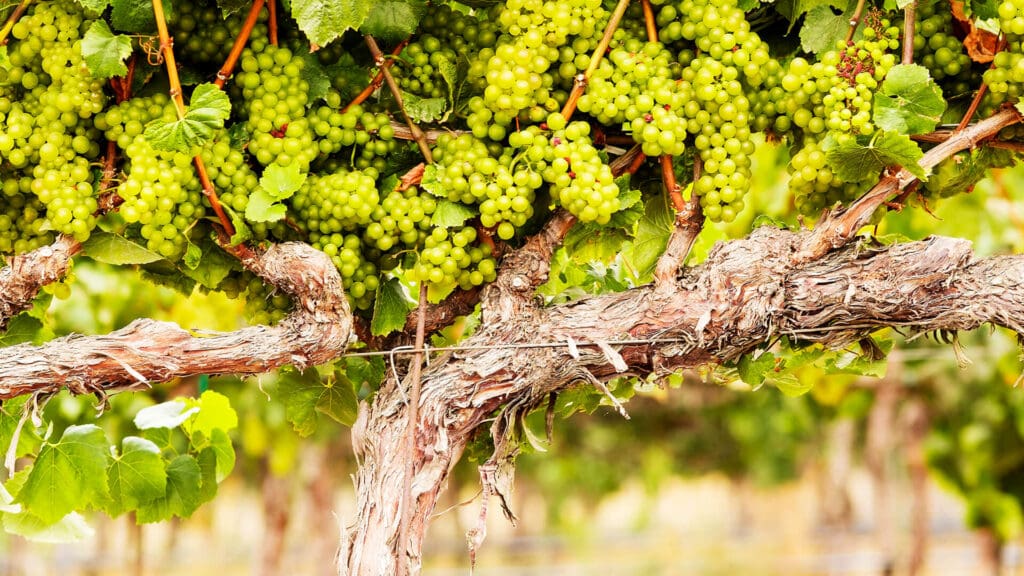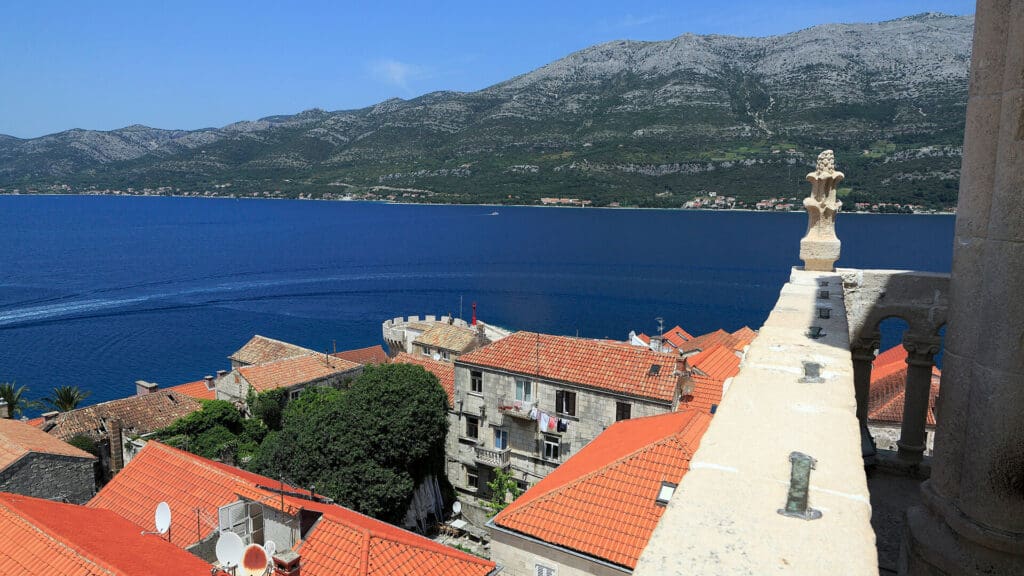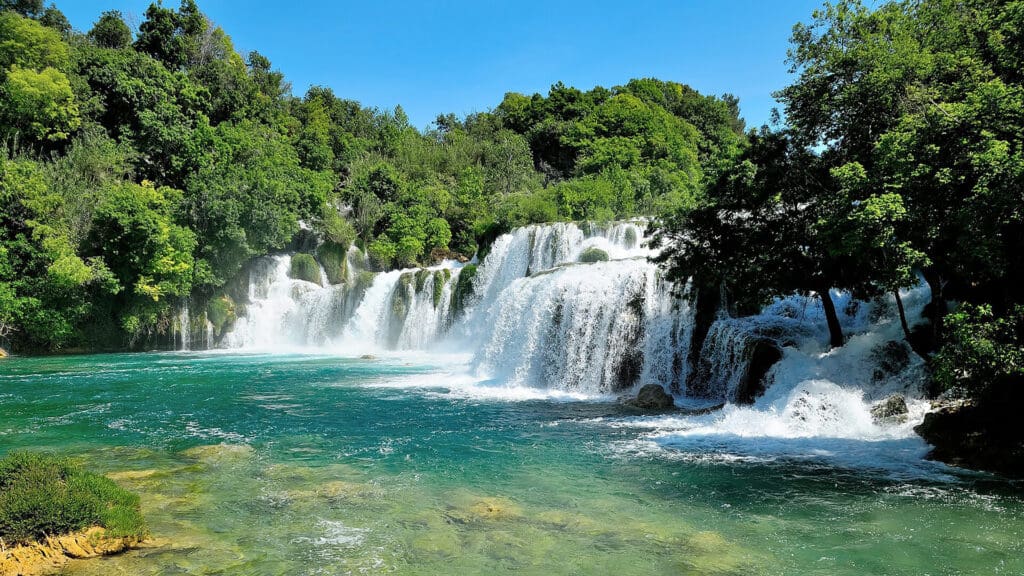Welcome to our journey into the delightful world of Croatian wine! Have you ever savored a glass of Zinfandel and thought about its origins? Interestingly, you might have already enjoyed a taste of Croatia without even realizing it.
The beloved Zinfandel, also known as Primitivo, shares its roots with Croatia’s native grape, Tribidrag, or Crljenak Kaštelanski. This revelation links Zinfandel directly to Croatia and introduces us to Plavac Mali, Croatia’s most cherished red wine and a direct descendant of Tribidrag. If you’re a fan of Zinfandel, there’s a good chance Plavac Mali will tantalize your taste buds in a similar way!
Croatia’s wine scene remains one of the world’s best-kept secrets, mainly because its wineries produce such limited quantities that large-scale export isn’t feasible. This exclusivity makes Croatian wine a must-try for any enthusiast looking to explore unique and exquisite flavors you won’t find on every supermarket shelf.
But where do you start? The thought of diving into the intricacies of Croatian winemaking, with its diverse regions and grape varieties, might initially seem daunting.
Fear not! We’ve prepared a straightforward guide to Croatian wine, designed to be as simple and accessible as possible. Whether wandering the picturesque landscapes of this Balkan paradise or simply dreaming of your next wine adventure from the comfort of your home, our guide will help you navigate the rich landscape of Croatian wines.
And if we leave you feeling inspired, please consider joining us for our Private Wine and Food Tour in Dubrovnik.

Exploring the Wine Regions of Croatia
Croatia’s wine regions are as diverse as the country’s landscape, offering a variety of flavors that cater to every palate. From the sun-drenched islands of Dalmatia to the lush hills of Istria, each region brings its unique characteristics to the table.
Dalmatia, known for its stunning coastline and historic cities, is also home to some of Croatia’s most beloved wines. Babić, a robust red from Šibenik, captures the essence of Dalmatia with its rich berry and spice notes.
Meanwhile, the island of Hvar gifts us with Bogdanuša, a white wine whose name means “gift from God,” cherished for its floral aroma and refreshing taste. (At Rewind, we offer Speedboat Transfers to Hvar from Dubrovnik and back.)

Heading to the central and north coast, Debit offers a citric herbal taste that matures into a vermouth-like complexity, making it a favorite alongside seafood. The Pelješac Peninsula is revered for Dingač, a premium red that commands attention during special occasions with its dark red to purple hue and rich flavor profile.
Istria, with its Italian influences, brings us Malvazija, a dry white that dazzles with citrus aromas and an intensive flavor profile, perfect for a wide range of culinary pairings. Not to be outdone, Plavac Mali stands as a testament to the red wine tradition of Dalmatia and Pelješac, boasting flavors of ripe cherries, spices, and a robust tannin structure that ages gracefully.
Signature Croatian Wines to Discover
As we delve deeper into Croatia’s viticultural offerings, the diversity continues to unfold. Pošip, from the islands of Hvar and Korčula, offers a refreshing yet strong aroma, ideal for complementing fresh seafood and grilled fish. Meanwhile, Istria’s Teran captivates with its rich, fruity flavor, a testament to the region’s winemaking heritage.
For those with a penchant for sweet and semi-sweet whites, Traminac from Ilok in Slavonia is a must-try, known for its rose aroma and historical significance, having been served at Queen Elizabeth II’s coronation. Žlahtina, almost exclusively from the island of Krk, offers a dry, golden delight that pairs wonderfully with local lamb and cheese.
Graševina, widely grown in Slavonia, showcases versatility in a bottle, embodying the region’s viticultural prowess. Istria’s Istarska malvazija represents the heart of Istrian wine, offering a range of tastes from robust coastal varieties to the more delicate bouquets of the hinterland.
For those seeking something off the beaten path, Kujundžuša and Lasina present unique tasting opportunities. Kujundžuša, with its light character, is a refreshing choice for seafood, while Lasina offers a rare glimpse into a lighter Dalmatian red, perfect for enjoying near the Krka National Park.

Croatia’s wine regions and the passionate winemakers perfecting their craft for generations offer an unmissable experience for any wine enthusiast. From exploring the ancient cellars of Slavonia to tasting the latest vintages along the Istrian Wine Roads, Croatia invites you to discover its rich wine heritage.
Whether planning an unforgettable wine-tasting holiday or combining it with a luxury cruise, Croatia’s wines are waiting to be explored, glass by glass.
Sound exciting? Consider booking a place on our Wine Tour of the Elaphiti Islands – first-class local wine and some of the most beautiful islands you’ll ever set eyes on.
Traditional Winemaking Techniques
Croatia’s winemaking heritage is deeply rooted in traditions that date back centuries, reflecting a profound respect for the land and its fruits. Croatian winemakers employ a blend of ancient techniques and modern innovations, ensuring the preservation of the wine’s authentic character while embracing practices that enhance quality and sustainability.
In the terraced vineyards of the Dalmatian Coast, traditional dry-stone walling techniques are still used to prevent soil erosion and maintain the vines. The use of indigenous yeasts in fermentation processes showcases a commitment to producing wines that truly represent their terroir.
One of the most intriguing traditional practices is the production of “amber” wines in the Istrian region, where white grapes are fermented with their skins, resulting in wines with a distinctive hue and complexity. Meanwhile, the method of aging wines in large, old oak barrels or even under the sea, as some innovative vintners in Dalmatia have experimented with, adds unique flavor profiles that cannot be replicated elsewhere.
Wine Tourism in Croatia
Wine tourism in Croatia offers an enchanting journey through scenic landscapes, historic cellars, and vineyards that tell the story of the country’s rich viticultural history. Croatia’s wine regions are increasingly becoming a draw for oenophiles and casual tourists alike, eager to explore off-the-beaten-track destinations and indulge in authentic experiences.
Notable wineries open to visitors include the Grgić Vina in Pelješac, founded by the internationally renowned winemaker Miljenko “Mike” Grgich, who traces his roots back to Croatia. The winery is famous for its Plavac Mali and Pošip wines.
In Istria, the Kozlović Winery stands as a testament to modern winemaking in a region steeped in history, offering tastings of Malvazija amidst contemporary architecture and stunning views.
Wine festivals and events punctuate the Croatian calendar, with the most famous being the annual Istria Wine and Walk, combining scenic hikes with stops at various wineries for tastings.
Enjoy a Taste of Croatia with Rewind…
The story of Croatian wine is one of passion, tradition, and a deep connection to the land. From the sun-kissed islands of the Adriatic to the rolling hills of Istria and Slavonia, Croatia offers a diverse palette of wines that reflect the richness of its landscapes and the spirit of its people. As Croatian wines continue to carve out their niche on the global stage, wine enthusiasts are invited to explore this lesser-known viticultural paradise.
Whether through a visit to its historic wineries, participation in its vibrant wine festivals, or simply by uncorking a bottle of its finest at home, discovering Croatian wine is a journey into the heart of a rich and evolving wine culture.
If you’re traveling in Dubrovnik and would like to enjoy delicious local produce, consider booking a place on our Dubrovnik Wine and Food Tour or Dubrovnik Craft Beer Experience.





